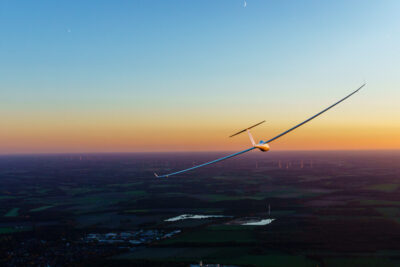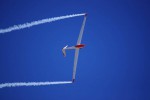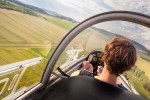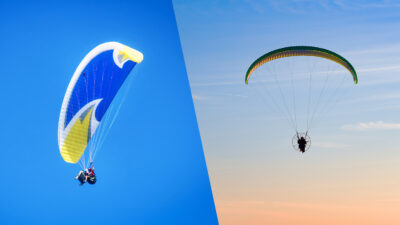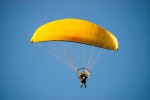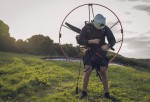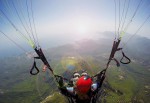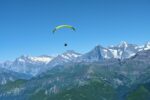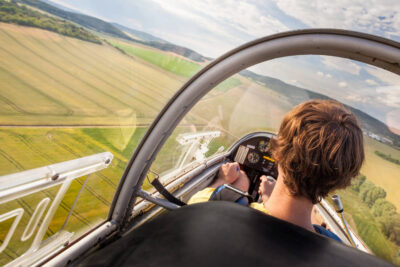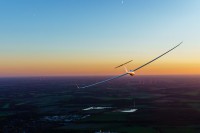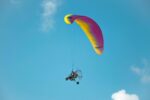How Difficult is Learning to Fly Gliders?
9 November 2023 | Updated on January 03, 2024
Learning to fly gliders is an exciting endeavor that may seem daunting at first. Many people wonder, is learning to fly gliders difficult? The answer is that while it does require practice and dedication, it is not very difficult.
When it comes to the basic principles of controlled flight, gliders are similar to powered aircraft. This means that if you have experience flying planes, you already have a foundation to build upon. Gliding, however, does require specific skills such as hand-eye coordination and muscle memory.
To obtain a pilot license, students must complete a minimum of 20 flights and 10 flight hours. This training allows them to develop the necessary skills and overcome unique challenges. These challenges include launching, thermalling, and landing, all of which require practice to master.
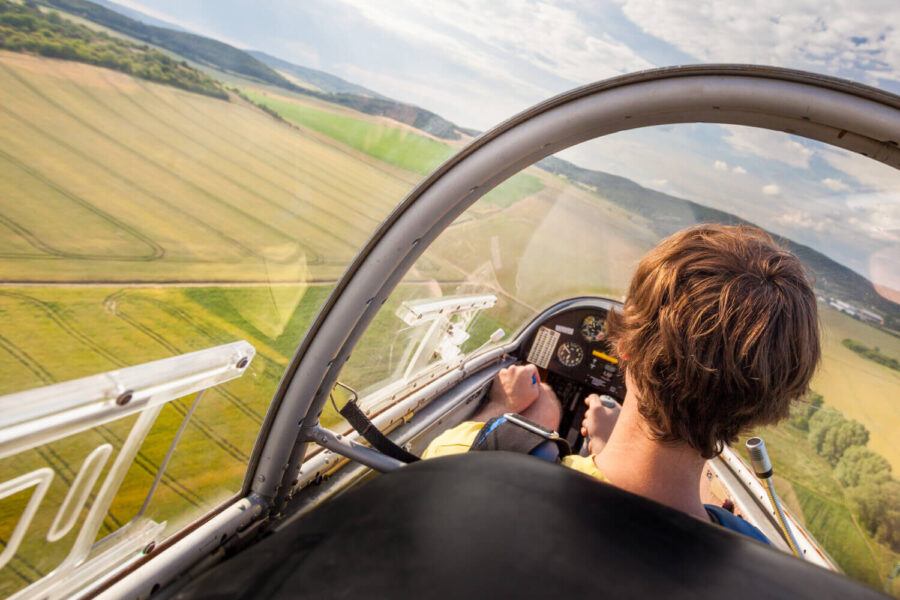
Key Takeaways:
- Learning to fly gliders is not very difficult, but it does require practice and dedication.
- The basic principles of controlled flight in gliders are similar to powered aircraft.
- Gliding requires specific skills such as hand-eye coordination and muscle memory.
- A pilot license requires a minimum of 20 flights and 10 flight hours.
- Overcoming challenges like launching, thermalling, and landing is part of the learning process.
Challenges in Glider Training Flights
When it comes to glider training flights, there are several challenges that pilots must overcome. One of the primary difficulties is the limited flight time available. Unlike powered aircraft that can have longer training flights lasting for hours, gliders rely on finding lift to stay aloft. This means that each flight allows for only a few repetitions of a skill before setting up for landing. As a result, more total flights are required to accomplish the necessary training proficiency.
This limited flight time also poses unique challenges in terms of skill development. Pilots must quickly become adept at various maneuvers and techniques within a shorter span of time. While the flights themselves may be relatively short, pilots have the opportunity to practice different skills and develop their proficiency. It requires focus and concentration to make the most out of every flight and maximize the learning experience.
To illustrate the impact of limited flight time, let’s take a look at a hypothetical comparison of training flights between a glider and a powered aircraft:
| Glider | Powered Aircraft | |
|---|---|---|
| Total Flight Time | 20 hours (minimum requirement) | 10 hours (hypothetical) |
| Number of Flights | 40 flights (20 flights x 2 repetitions) | 5 flights (10 hours / 2 hours per flight) |
This comparison highlights the need for additional flights in glider training to achieve the required flight time and skill development. Glider pilots must make the most out of each flight, focusing on improving specific maneuvers and techniques to progress in their training.
Challenges in Launching Gliders
Launching a glider poses several challenges for pilots. One of the main difficulties is maintaining wings level during the launch. Gliders typically have a single main gear under the fuselage, which makes it crucial to keep the wings balanced and avoid any uneven lift or drag forces. Pilots must develop the skills to adjust the control surfaces and maintain the proper attitude throughout the launch.
There are two common methods of launching gliders: winch launch and aero tow. Each method has its own set of challenges. During a winch launch, the glider is attached to a cable and pulled into the air by a winch. The pilot needs to manage the tension in the cable and control the glider’s pitch and roll to ensure a smooth ascent. On the other hand, in an aero tow, the glider is towed into the air by a powered aircraft. Pilots must maintain the correct distance and position behind the tow plane and make precise adjustments during the climb.
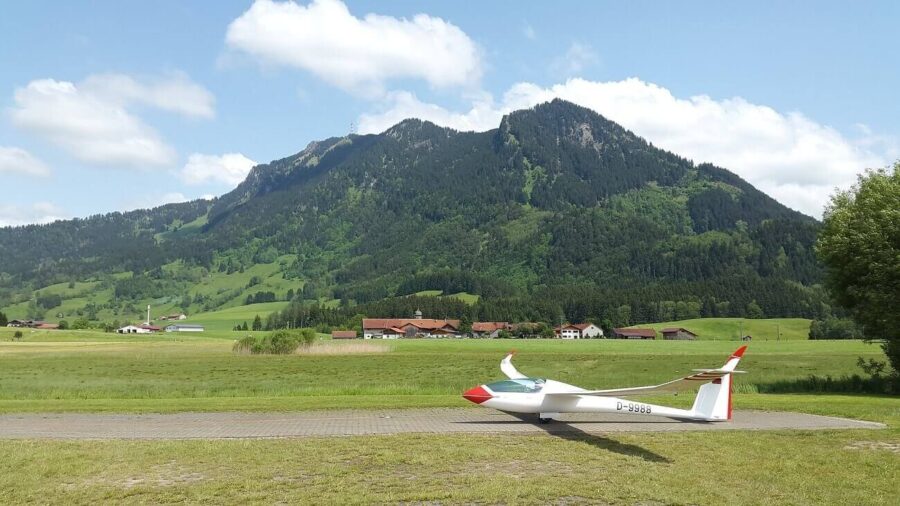
Challenges in Launching Gliders
Launching a glider poses several challenges for pilots. One of the main difficulties is maintaining wings level during the launch. Gliders typically have a single main gear under the fuselage, which makes it crucial to keep the wings balanced and avoid any uneven lift or drag forces. Pilots must develop the skills to adjust the control surfaces and maintain the proper attitude throughout the launch.
There are two common methods of launching gliders: winch launch and aero tow. Each method has its own set of challenges. During a winch launch, the glider is attached to a cable and pulled into the air by a winch. The pilot needs to manage the tension in the cable and control the glider’s pitch and roll to ensure a smooth ascent. On the other hand, in an aero tow, the glider is towed into the air by a powered aircraft. Pilots must maintain the correct distance and position behind the tow plane and make precise adjustments during the climb.
Launching a glider poses several challenges for pilots. One of the main difficulties is maintaining wings level during the launch. Gliders typically have a single main gear under the fuselage, which makes it crucial to keep the wings balanced and avoid any uneven lift or drag forces. Pilots must develop the skills to adjust the control surfaces and maintain the proper attitude throughout the launch.
| Launch Method | Challenges |
|---|---|
| Winch Launch | Managing cable tension Controlling pitch and roll Achieving a smooth ascent |
| Aero Tow | Maintaining correct distance and position Precise adjustments during the climb |
Difficulty of Thermalling in Gliders
Thermalling is a fundamental skill that glider pilots must master to stay aloft and maximize their flight time. However, it is not without its challenges. One of the main difficulties in thermalling is finding and utilizing thermals effectively. Thermals are rising columns of warm air, and their location and strength can vary depending on factors such as regional weather patterns and terrain features.
Understanding these patterns and being able to identify the likely origin point of thermals are crucial skills for glider pilots. They must also visualize the path that the rising air follows to navigate and gain altitude. Unlike ridge and wave lift, which are larger areas of consistent lift, thermals are smaller and less predictable. Pilots must rely on their knowledge and experience to detect and exploit these elusive sources of lift.
Additionally, the success of thermalling depends on the pilot’s ability to maintain precise control of the glider’s flight path. Small adjustments in bank angle, pitch attitude, and coordinated flight are necessary to stay within the thermal and climb efficiently. Pilots must constantly monitor flight instruments and make subtle adjustments to optimize their position within the thermal. It requires a combination of technical skills, situational awareness, and a “feel” for the glider’s energy to master thermalling effectively.
| Challenges in Thermalling | Difficulty Level |
|---|---|
| Finding thermals | Medium |
| Utilizing thermals effectively | High |
| Understanding regional weather patterns | Medium |
| Visualizing thermals’ paths | Medium |
| Maintaining precise control | High |
Despite its challenges, thermalling is a rewarding skill to develop as it enables glider pilots to extend their flight time and explore the skies more freely. With practice and experience, pilots can overcome the difficulties and unlock the full potential of thermals for an exhilarating gliding experience.
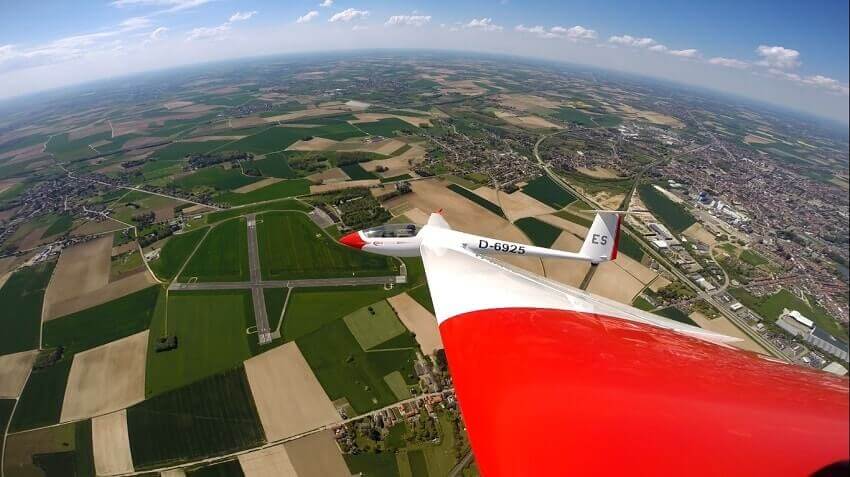
Importance of Coordinated Flight in Gliders
One of the key factors in safe and efficient glider flying is maintaining coordinated flight. Coordinated flight refers to the balanced control of the glider, where the forces of lift, weight, thrust, and drag are properly managed. It is crucial, especially during turns, as uncoordinated flight can result in slipping or skidding turns, leading to a loss of control and potential accidents.
To ensure coordinated flight, glider pilots rely on various flight instruments. These instruments provide essential information about the aircraft’s performance and state, enabling pilots to make necessary adjustments. The most common flight instrument used for maintaining coordination is the turn and slip indicator or turn coordinator. It visually displays the rate and direction of the turn, helping pilots make coordinated turns and prevent side-slips or skids.
Another important aspect of maintaining coordinated flight is understanding and managing the centrifugal force that acts on the glider during turns. Centrifugal force tends to push the glider outwards, away from the center of the turn. Pilots need to apply coordinated control inputs, such as banking the glider with the ailerons and applying rudder inputs, to counteract the effects of centrifugal force and maintain balance.
The Role of Coordinated Flight in Thermalling
In thermalling, maintaining coordination becomes even more critical. Thermals are rising columns of warm air that glider pilots use to gain altitude. To effectively utilize thermals, pilots must fly at the glider’s best lift-to-drag speed, which is often close to the stall speed. This requires precise control inputs and coordination to prevent stalling or losing control of the glider.
Developing a “feel” for the glider’s energy and coordination is considered an essential skill by most glider pilots. It enables pilots to make subtle adjustments and maintain optimal flight conditions, ensuring efficient climbing in thermals and maximizing the glider’s performance. With practice and experience, pilots become proficient in maintaining coordinated flight and can fully enjoy the art of soaring through the skies.
| Importance of Coordinated Flight | Maintaining Centrifugal Force | Flight Instruments | Thermalling |
|---|---|---|---|
| Maintains safety and control during turns | Counteracts the effects of centrifugal force | Turn and slip indicator for visual feedback | Requires precise control and coordination |
| Prevents slipping or skidding turns | Proper banking and rudder inputs | Avoids side-slips or skids | Optimal flight conditions for climbing in thermals |
| Enables efficient and enjoyable glider flying | Close coordination between pilot inputs | Helps pilots make coordinated turns | Maximizes glider performance in thermals |
Landing Challenges in Gliders
When it comes to landing in gliders, pilots face unique challenges that require precision and excellent energy management skills. Glider runways usually provide sufficient length for pilots to overshoot their intended touchdown point. However, accurate approaches and touchdowns are crucial, especially for off-field landings in rural areas.
To ensure a safe landing and avoid obstacles like fences or tree lines, pilots must practice precision in their approaches and landings. Every landing is an opportunity to develop and refine these skills. Unlike powered aircraft, glider pilots don’t have the option for a go-around, so getting it right the first time is essential.
“Precision and accuracy are the keys to successful landings in gliders. Pilots must maintain a steady descent rate and manage their energy effectively to control the aircraft’s speed and glide path, especially in challenging landing conditions.” – Experienced Glider Instructor
Mastering landing challenges in gliders requires a combination of factors. Pilots need to understand the glider’s flight characteristics, including its glide ratio and stall speed, and be able to adjust their approach accordingly. They must develop a deep understanding of the energy state of the glider throughout the landing process, using techniques such as slip maneuvers or S-turns to dissipate excess energy and achieve the desired touchdown point.
In summary, landing a glider demands precision, energy management skills, and the ability to adapt to varying landing conditions. Glider pilots must continually practice and refine their landing techniques to ensure safe and successful landings, both on and off the runway.
| Landing Challenges | Strategies to Overcome |
|---|---|
| Precision in Approaches | Practice accurate descent rates and aiming points during training flights |
| Energy Management | Master slip maneuvers and S-turns to control glide path and dissipate excess energy |
| Off-Field Landings | Develop skills in assessing and selecting suitable landing spots in rural areas |
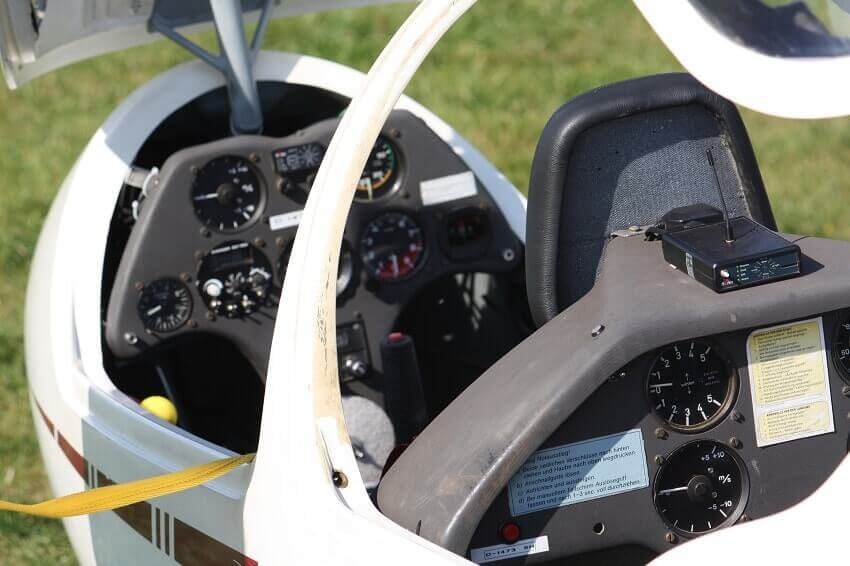
Conclusion
Learning to fly gliders is a challenging yet highly rewarding endeavor. With practice and dedication, pilots can overcome the unique challenges of gliding and develop the necessary skills to become proficient in this exhilarating sport.
Gliding offers a unique sense of freedom as you soar through the skies, relying on your skills and the power of the air to stay aloft. From mastering the art of launching and thermalling to maintaining coordinated flight and executing precision landings, every step of the journey in glider flying is an opportunity for growth.
By enlisting the guidance of experienced instructors and immersing yourself in the world of gliding, you can unlock the joy and fulfillment that comes with becoming proficient in this extraordinary sport. Whether you aspire to fly for leisure or pursue gliding as a competitive endeavor, the journey of learning to fly gliders is one that promises a lifetime of enjoyment.
FAQ
Is learning to fly gliders difficult?
Learning to fly gliders is challenging but achievable with practice and dedication.
What are the challenges in glider training flights?
The primary challenge in glider training flights is the limited flight time, which requires more total flights to accomplish the necessary training.
What are the challenges in launching gliders?
Launching a glider poses challenges such as maintaining wings level during launch and developing specific skills for winch launch and aero tow.
What is the difficulty of thermalling in gliders?
Thermalling in gliders requires an understanding of weather theory, knowledge of regional weather patterns, and the ability to find and utilize thermals.
Why is coordinated flight important in gliders?
Maintaining coordinated flight is essential in gliders to avoid dangerous slipping or skidding turns and to achieve optimal performance, especially during thermalling.
What are the landing challenges in gliders?
Landing in gliders requires precision and excellent energy management skills to ensure a safe landing, especially in off-field landings.
What is the conclusion about learning to fly gliders?
Learning to fly gliders can be a rewarding journey with the guidance of experienced instructors and a passion for flight.
